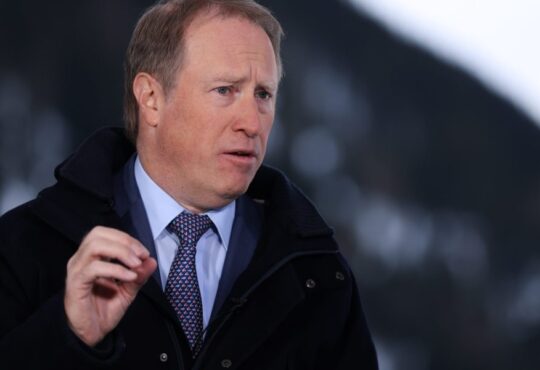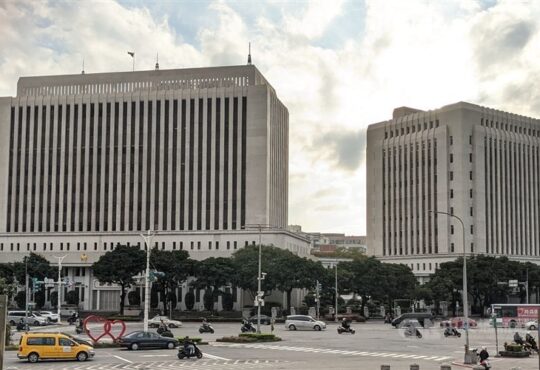
abstract. Money is power. Banks have the extraordinary power to create the nation’s money and credit, which they are entrusted to channel into productive economic uses. Like most other forms of economic power, this publicly granted privilege can be abused for private gain. That is why the “money monopoly” and “money trusts” were once considered one of the most dangerous forms of concentrated private wealth, an existential threat to economic freedom and American democracy. Yet, for the past half-century, the law governing banks and the law curbing monopolies have occupied doctrinally and normatively separate spaces. Today, banking law is seen predominantly as an instrument of ensuring banks’ “safety and soundness,” which only minimally overlaps with competition-focused antitrust law.
This
Essay offers a new understanding of banking law and its connection to
antitrust. It argues that, contrary to the prevailing view, U.S. bank
regulation operates as a comprehensive antimonopoly regime, designed to prevent
excessive concentration of private power over the supply and allocation of
money and credit in a democratic economy. The Essay shows how multiple
provisions of banking law impose structural constraints on banks’ ability to
abuse public subsidy and other government-granted powers and privileges. While
often understood as serving purely prudential purposes, these statutes and
regulations seek to protect America’s economy from potentially perilous
competitive distortions and domination by concentrated financial interests.
Reframing
the core narrative of U.S. banking law around the issue of economic power in a
democratic society has far-reaching implications. Embracing the embedded
antimonopoly spirit of bank regulation can fundamentally reset policymakers’
priorities and expand their options. It can generate more effective and
comprehensive solutions to some of today’s most pressing public policy
challenges, from the continuing growth of “too big to fail” banks to the rise
of crypto and digital platform-based finance.
authors. Saule T. Omarova is Beth and Marc Goldberg
Professor of Law, Cornell University. Graham S. Steele served as the Assistant
Secretary for Financial Institutions at the U.S. Department of the Treasury
from 2021 to 2024. Professional affiliations are provided for identification
purposes only. The views and opinions expressed in this Essay are those of the
authors and do not necessarily reflect the official policy or position of any
agency of the U.S. government. For their thoughtful comments and criticisms,
the authors would like to thank Dan Awrey, Felix B. Chang,
Adam Feibelman, Anna Gelpern,
Jamie Grischkan, Jeremy Kress, Patricia A. McCoy,
Howard Shelanski, Sandeep Vaheesan,
Spencer Weber Waller, Art E. Wilmarth, and
participants in conferences and workshops at Yale University, Vanderbilt
University, the Wharton School at the University of Pennsylvania, Arizona State
University, and the University of California College of the Law, San Francisco.
All errors are ours.
Introduction
Antitrust is once
again a hot area in U.S. law and politics. The rise of Amazon, Facebook, Google, and
other giants forced it out of stuffy courtrooms and academic halls and into the
public square.
Technology platforms’ aggressive growth and seemingly unlimited ability to
control our social and economic lives ignited a movement to revive antitrust as
a tool of democratic politics. Paralleling American politics of the early
twentieth century, antitrust is now the stuff of fiery campaign speeches,
bestselling books, and intense doctrinal debates.
In the wake of a pandemic that exposed deep inequality and structural
weaknesses in the nation’s economy, it may also translate into substantive
policy change. The Biden Administration has signaled its resolve to prioritize
curbing the power of big businesses and restoring fair competition in key
sectors of the U.S. economy.
That caused not only Big Tech but Big Pharma, Big Agribusiness, and many other
highly concentrated industries to brace themselves for the new era of antitrust
enforcement.
Except for Big Banks. America’s banking industry does not
seem concerned about the antitrust turn in American politics. As the leading trade publication put it, President Biden’s
actions pose a “minimal threat” to the ongoing consolidation in the banking
sector.
Wall Street clearly believes it is beyond the reach of new-generation
trustbusters.
This is puzzling. Financial institutions are
not immune from antitrust laws. Competition policy is part of federal bank
regulation, administered by the specialized regulatory agencies—the
Board of Governors of the Federal Reserve System (Fed), the Office of the
Comptroller of the Currency (OCC), and the Federal Deposit Insurance
Corporation (FDIC)—in coordination with the Department of
Justice (DOJ). It
is also not the case that the U.S. financial industry is perfectly competitive.
Banking is notoriously concentrated, with the ten largest commercial banks
controlling about 55% of the U.S. banking assets, and
the eight U.S. Global Systemically Important Banks (GSIBs) accounting for
approximately 66% of the assets held by U.S. bank holding companies (BHCs). In
fact, one of the most politically salient problems in financial policy is the
existence of “too big to fail” (TBTF) banking conglomerates effectively
shielded from market discipline.
Yet, for the past half-century, antitrust
has not been a prominent theme in U.S. banking law and regulation. Regulators
have balanced the need to promote competition within the sector with the more
prominent goal of preserving the stability of the banking system and solvency
of individual institutions. To
the extent that these goals are inherently in tension, competition concerns
remain subordinate to banks’ “safety and soundness.”
Even the TBTF problem, which clearly implicates antitrust-like concerns, is
treated primarily as a matter of macroprudential regulation—a set of
regulatory objectives and tools aimed at protecting the stable functioning of
the financial system. “Bigness” is not viewed as problematic, as
long as big banks run their portfolios prudently under the watchful eye of
their regulators and supervisors. Accordingly, the goal is not to keep
individual banking firms from becoming too
big but to keep them from becoming too
risky.
The government’s response to the financial
crisis of 2008 reflected this logic. The bailout of Wall Street resulted in a
smaller number of bigger banking institutions, and post-crisis regulatory
reforms aimed to ensure that these reconstituted giants do not fail. Fifteen years later, the domino-like
failures of Silvergate, Silicon Valley Bank (SVB),
Signature Bank, and First Republic Bank put a new spin on the same problem. By
exposing multiple regional banks’ vulnerabilities, this latest crisis refocused
public attention on the need for good risk management and traditional
prudential oversight.
Massive deposit flight, expansion of deposit insurance to protect large
depositors, and emergency sales of troubled banks further increased the size of
large banking conglomerates and led to calls for liberalizing federal bank
merger policy.
Greater concentration and greater public subsidies once again became the price
of banking sector stability.
The single-minded prioritization of safety
and soundness makes bank regulation appear fundamentally different from
antitrust law, which seeks to preserve fair competition and prevent monopolies.
The two spheres are seen as doctrinally and normatively separate, with only a
small area of overlap—primarily, bank merger review. Beyond
this, antitrust currently has little impact on banks’ daily operations.
This Essay challenges that widely accepted
view. It offers an alternative understanding of the relationship between the
principles of antitrust and banking law. We argue that, on a deeper level, U.S.
bank regulation is designed to operate—and needs to be recognized—as a
particular kind of sector-specific antitrust regime, rooted in the antimonopoly
tradition in American law and policy.
In making this claim, we adopt a structural view of antitrust, which
defines its core objectives in deliberately broad terms of preventing excessive
concentration of private economic power. This view rests on a simple yet
powerful notion that “antitrust policy doesn’t operate in a vacuum; it is
interwoven with the fabric of the economy.” From this perspective, the overarching
purpose of antitrust is not simply to maintain some technical measure of “competitiveness”
in specific product markets, but to create durable structural foundations for
the healthy growth of a democratic economy.
Historically, the principal federal antitrust
laws—the Sherman Act, the Clayton Act, and the
Federal Trade Commission Act—were a direct response to the growing
threat corporate monopolies posed to American economic and political democracy.
Through these statutes, Congress sought to safeguard competitive markets and to
prevent excessive concentrations of private power that threatened the nation’s
vitality and growth. Since the 1970s, however, U.S. antitrust jurisprudence has
been myopically focused on consumer prices in specific product markets.
Antitrust analysis and enforcement were reduced to technical application of
microeconomic models, foreclosing broader political-economic concerns that
animated the trustbusters and Progressives of the early twentieth century.
It is those original understandings of
antitrust, recently revived by the proponents of a progressive neo-Brandeisian movement, that underlie our project.
This Essay reframes the core narrative of U.S. banking law as a multilayered
system of structural constraints on private banks’ accumulation and abuse of
economic power. It reveals the macrosystemic significance of federal bank
regulation as a de facto antimonopoly regime that operates through a variety of
mechanisms. Most of these mechanisms are routinely viewed solely as tools of
prudential regulation and supervision. Their other role as structural means of preventing excessive
concentration of corporate power over the supply and allocation of financial
resources in a democratic economy is nearly entirely overlooked, in both
academic discussions and policymaking.
We divide these mechanisms into three
categories.
The first category includes three provisions
of U.S. banking law that establish what is generally recognized as competition
policy in banking: regulatory review of bank mergers and acquisitions, anti-tying
rules, and prohibitions on management
interlocks.
This modality represents direct, or formal, application of antitrust to banking institutions and remains the
overwhelming focus of the scholarly literature on antitrust and banking.
The second category includes elements of
banking law that, while not explicitly labeled as such, nevertheless function
as antitrust tools. These include liability and loan concentration limits, rate
regulations, and authority to break up large banking organizations. Each of
these provisions has a parallel, though not necessarily identical, principle in
competition policy. This modality thus represents functional replication of traditional antitrust in bank regulation.
The third and final category comprises the
key elements of U.S. bank regulation without direct parallels in antitrust law:
market entry controls, activity and affiliation restrictions, and regulation of
inter-affiliate transactions.
Typically framed in terms of bank safety and soundness, these provisions are
unique to banking law. On the surface, they reflect an uneasy choice in favor
of financial stability at the expense of market competition. Below the surface,
these familiar provisions operate as unnatural
monopoly regulation: they structurally constrain potential abuses of
government-granted private power over the nation’s money and credit. This
modality demonstrates the broader significance of prospective structural
regulation as a potent antimonopoly tool. In this sense, it represents operational deepening of a structural
approach to antitrust.
The government-granted monopoly on money
creation is what ultimately explains the bank regulatory regime’s focus on
maintaining the public/private balance of power. Banks are “special” entities
to which the federal government outsources the sovereign task of creating,
distributing, and managing the supply of U.S. dollars. Banks’ power comes from
their uniquely privileged position as specially licensed and subsidized agents,
or “franchisees,” of the sovereign public. In this arrangement, the government commits
to accommodating and guaranteeing private banks’ liabilities—the bulk
of the nation’s money supply—thereby shielding banks from the disciplining
effects of market competition and potentially incentivizing them to engage in
socially harmful risk-taking.
The task of bank regulation and supervision
is to minimize the moral hazard built into this arrangement, maintain the
stability of publicly subsidized franchisee banks, and prevent overissuanceof
money in relation to the needs and productive capacity of the nation’s economy. “Safety
and soundness” is an umbrella concept that captures these concerns in the most
readily recognizable ways. It also operationalizes the overarching imperative
of preserving the delicate balance of power in the public/private financial
system. In that sense, prudential regulation channels the same fundamental
concerns as those traditionally associated with the progressive, structural
approaches to antitrust—preventing private institutions from abusing their
entrenched competitive advantages. This Essay seeks to recover that deeply
rooted commonality and highlight the importance of overcoming mechanical
reliance on the narrowly defined notion of “safety and soundness.”
This Essay has potentially far-reaching
implications. Reconsidering the aims of banking law to incorporate the
forgotten goal of constraining excess corporate power expands the horizons of
bank regulation and sharpens its focus. It reveals the multidimensional nature
of competition concerns animating the existing regime of bank regulation by
showing how some of its core elements—traditionally seen as limiting
competition within the sector—are, in fact, designed to safeguard fair
competition in the broader economy. Normatively, it shifts attention from the
purely quantitative indicators of market concentration to the underlying
substantive dynamics of concentrated private power over the vital public
resource: the monetized full faith and credit of the United States. This more
nuanced understanding, in turn, broadens the scope of policy choices and
operational tools available to policymakers to include more structural,
macrosystemic remedies.
The analysis presented in this Essay,
moreover, fills an important gap in the contemporary vision of structural
antitrust. While some neo-Brandeisian scholarship
engages with aspects of financial regulation, it has yet to advance a comprehensive
account of the complex relationship between money, banking, and a democratic
economy. A fuller appreciation of U.S. banking law as an antimonopoly regime is
a critical component of a truly progressive economic policy agenda.
Rapid technological changes in finance and
the broader economy make this reconceptualization exercise particularly timely. The entry of Big Tech companies into
financial services, in particular, threatens to take the familiar TBTF problem
to a qualitatively new level, reigniting the old debate on the “curse of
bigness.” At the same time, upstart challengers in financial technology
(fintech), cryptocurrency, and decentralized finance (DeFi)
are reviving old arguments promoting the potential benefits to financial
consumers from unfettered competition. The rhetoric of tech-driven “democratization”
and “innovation,” however, often masks the old dynamics of concentrated control
replaying themselves in a new environment. Behind the shiny surface of
innovation, the balance of public and private powers in finance is under
tremendous pressure.
In this context, it is vital to rethink the
synergies between antitrust law and financial regulation, which share the
fundamental normative focus on preserving the structural integrity of, and
curbing the excesses of concentrated private power in, U.S. markets. This
shift in perspective will empower policymakers to take a more forward-looking
and proactive approach to the ongoing transformation of finance. It will enable
them to identify and address emerging systemic threats that do not fit neatly
into the standard “safety-and-soundness” framework—threats that, left
undisturbed, may grow into problems too big to solve through existing
regulatory means.
Explicitly embracing
the antitrust spirit of U.S. banking law underscores the fact that strong
regulatory oversight of the financial sector is not inimical to market
competition, just as deregulation is not inherently procompetitive. From the
perspective of individual banking firms, regulatory compliance is a cost that
can create a competitive disadvantage vis-à-vis
unregulated rivals and cut into their profits.
From a macrosystemic perspective, however, the regulations that generate these
microlevel costs are often critical to the preservation of healthy market
competition, not only in banking but also in the broader economy. Recognizing
these dynamics is necessary in order to avoid privately beneficial but publicly
harmful policy choices in the name of “promoting competition.” The rapid
advance of fintech and crypto-finance makes it particularly important to resist
misleading rhetoric and to strengthen, rather than weaken, regulatory
protections against excessive growth and abuses of structural power in finance.
In this Essay, we do
not claim to provide an exhaustive account of antitrust law or history, nor to offer
a comprehensive critique of how modern antitrust doctrine is (or should be)
applied in the banking context. Moreover, this Essay does not argue that every provision of U.S. banking law
operates as an antitrust tool in disguise—only
that many do. Our goal is not to downplay the
significance of prudential considerations in banking but to recover a lost
motivation underlying many foundational provisions of banking law. By exposing
the hidden antimonopoly roots of familiar banking principles, we seek to reconnect
two strands of economic law and policy that recent popular conception holds as
being only tangentially related. Much more remains to be written both about the
complex interplay of antitrust and banking laws and about various
competition-inspired elements of bank regulation. By advancing a new narrative
of the field, this piece lays the foundation for a more productive and
policy-relevant exploration of these issues.
The Essay proceeds
as follows. Parts I and II outline the basic logic and common policy concerns
underlying U.S. antitrust and banking laws. Part III discusses formal
competition policy tools in banking. Moving beyond these familiar examples,
Part IV analyzes regulatory provisions that channel traditional antitrust
concepts in less direct, and sometimes even counterintuitive, ways. Part V
examines well-known elements of banking law imposing structural constraints on
private banks’ government-granted, or unnatural, monopoly powers. Finally, Part
VI draws out key public policy implications of this reframing, with a focus on
two salient challenges currently facing financial regulators: the TBTF problem
and the rise of digital finance.






